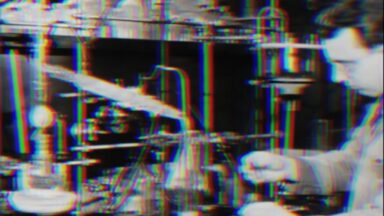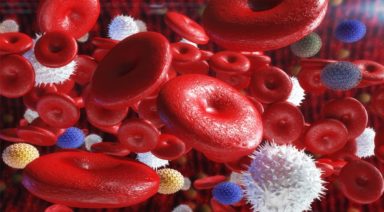Parallel Lives in Comas and NDEs: Is This Proof of The Afterlife?

Have you ever awoken from a dream so seemingly real that you regret waking up, or maybe even question reality? One of those reveries that stays with you the rest of the day or for weeks to come? A dream that leaves you in a state of ineffable nostalgia?
But what if that dream was so realistic it put you into a state of depression, questioning whether it was more real than this reality? Such is often the case for people who live another lifetime while in a coma when knocked unconscious, or during a near-death experience (NDE), who come back believing they’ve found proof of an afterlife or another reality beyond.
These NDEs can add a layer of confusion to the existential questions of life – why we’re here, how we got here, and what happens when we die – or in some cases, it can add a layer of clarity.
The topic has become subject matter for massively popular books, movies, and shows, though academics debate the validity of such experiences, writing them off as anesthesia hallucinations or the product of an intense, prolonged dream. But often the subjective and convincing nature of these experiences forces disbelievers to question what they once thought was sacrosanct.
And it is within these stories that we begin to question the foundations of our own conscious reality.
Concussions and Strange Coma Stories
There is a popular story circulated on Reddit of a college student’s experience while knocked unconscious. And while it’s difficult to verify the story’s authenticity, there is a multitude of anecdotes in response from people who have experienced similar phenomena while in an unconscious state.
Often these accounts result in bizarre time distortions for the experiencer, in which years pass when in reality they were unconscious for only a few minutes. This same time dilation can happen under anesthesia, in dreams, and during intense psychedelic trips, leaving the subject confused upon resuscitation, questioning the meaning of reality and time itself.
This phenomenon is usually explained as our mind filling in the narrative of a dream with memories that seem to have been living. But this Reddit user’s experience titled, A Parallel Life / Awoken By A Lamp, recounts his experience living out a decade of another life, including the birth and upbringing of two children.
You can find the full story (here), but for an abridged version read on…
The Reddit user said that during his last semester at college, he was knocked out by a football player three times his weight. While unconscious he met a woman, was happily married, and experienced the birth of two children. Every day he walked into his children’s rooms and spent time with them before leaving for work. He had a great job, a beautiful relationship with his wife, and detailed emotional memories connecting him to this family.
But one day he noticed that a lamp in his house looked strange – it was inverted and just looked off. He spent the following days on the couch, staring at the lamp, trying to figure out why it looked the way it did. He stopped eating, drinking, and even using the bathroom. His wife grew worried and brought someone to the house to talk to him, before taking the kids to her mother’s house because she was so upset. Then he realized the lamp was not real, nor was the house, the wife, or the kids either. All of a sudden, he woke up to voices, screams, and a police officer picking him up and putting him in his car to go to the hospital.
Mere minutes had passed, but in his unconscious state, an entire decade of life ensued. He spent the next several years in a state of depression, trying to cope with the loss of a family he believed to be real, and a reality remarkably less pleasant than the one he believed he had lived.
Watch this episode of Open Minds with Raymond Moody the psychologist who coined the term “Near Death Experience:”
Coma Patients’ Stories
The aforementioned story might be described in medical terms as confabulation; a disturbance of memory, defined as the creation of fabricated, distorted, or misinterpreted memories about oneself or the world, without the conscious intention to deceive.
It’s a pretty basic definition through a materialist lens, but it doesn’t necessarily explain why these experiences have such a profound impact on someone’s grasp of reality, and why the emotional fallout can be so heavy. Is it because it often stems from one’s deep-seated desires or projections of the person they want to be in life? Or could they be memories of a past life?
A similar scenario played out with an Englishman named Alpha Kabeja. Kabeja was riding his bike through London one day when he was suddenly struck by a van with enough force to knock his brain out of place in his skull. He spent three weeks in a medically induced coma, before coming back with confabulated memories.
Kabeja came to, under the impression he had been on his way home from a successful interview where he was offered a job as the assistant to the director of operations at MI5 – England’s secret service agency. He also believed his wife was expecting twins, named Sky and Nikita. He believed he kept a picture of her ultrasound in a book and took pictures of her with a pregnant belly. He also remembered that before he came out of his coma, he had been Skyping with her while she was on vacation in France.
Kabeja remembered these details as vividly as childhood memories, despite the fact they were fabricated. Doctors said his brain pieced them together based on other things going on his life, prior to the accident. For example, friends of his were expecting twins, and he wanted to start a new career in a government role. Essentially, his brain connected memories with subconscious desires or projections from his life before the accident; at least that’s the explanation doctors provided.
The Western vs. Eastern Perspective
The work of Stanislav Grof regarding non-ordinary states of consciousness and NDEs is likely the most relevant to the mystery behind these experiences. Aside from his studies with NDEs, Grof’s research involves non-ordinary states of consciousness derived from ecstatic, mystical, and psychedelic experiences, of which every culture outside of the Western world regularly and intentionally evokes.
These parallel lives are considered to be much more important and profound than mere hallucinations or dreams when viewed through the lens of a culture with a rich history in mysticism, shamanism or mythology.
Grof considers them a connection to Carl Jung’s collective unconscious; the universal psyche of which our intellects are a tiny fragment. Addressing the technologically focused, materialist worldview, Grof compares these brain states to a computer, in much the same way science sees our brain.
“If you damage a computer all you’re going to get is a jangled program, you’re not going to get another strange, comprehensive program. So, the idea that some kind of pathological process influences the brain and makes you identify with the dancing Shiva and suddenly you will understand everything there is to know about that aspect of Hinduism – it’s just not a very scientific, believable way of thinking.” — Stanislav Grof
Instead, Grof believes these non-ordinary states of consciousness are transpersonal experiences; transcending spatial boundaries, identity, and what Alan Watts called the “skin-encapsulated ego.”
He says that with non-ordinary states, time becomes distorted. One can pull the past into the present moment, bringing historical events into the now, or relive experiences from a past life. In our waking ordinary consciousness, all we can experience is the present moment based on our mundane sensory perception, but with cultures that tap into these ecstatic states, one can transcend time and space like flipping over the television channel.
Could this be the case with other lives experienced during a coma and other states of unconsciousness? For more insight, listen to Stanislav Grof’s Conscious States of Dying:
When Someone Dies, Can They Come Back to See You?

No matter what your spiritual beliefs are, dealing with the death of a loved one can be incredibly difficult. The smallest message or sign from a deceased loved one can mean the world to any human being. However, there are several ways to receive messages from the dead, but they can be rather subtle and might be overlooked or discounted if you don’t know what to look for. Explore life after death to learn whether a deceased person is trying to contact you from the spirit world.
Loved Ones Communicating Beyond the Grave
There are countless cases of loved ones contacting their living counterparts after they’ve passed, or in some cases while they’ve been clinically dead, before being brought back to life.
In one instance, recounted by Dr. Raymond Moody, the researcher who coined the phrase near-death experience or NDE, a surgeon once told him that while operating on a young man, his patient went into cardiac arrest. Believing he had lost the patient, the man’s wife burst into the room screaming that her husband had visited her in the waiting room and told her the doctor thought he was dead but that he was still alive and able to be saved. The surgeon immediately began to perform resuscitation techniques and brought the patient back to life.
After-death communication is very common soon after a loved one passes away. And while everyone’s loved ones have different ways of communicating this, the signs we see are usually more than sheer coincidence.
When looking for signs of a loved one visiting or communicating with you after they have passed, think of things from their life that they had a predilection for, whether that’s a particular animal, flower, or song. These personal affections typically appear in their attempts to reach you in the physical world, and rightfully so. If there’s one thing you’d associate strongly with them, it’s sure to stand out.




































